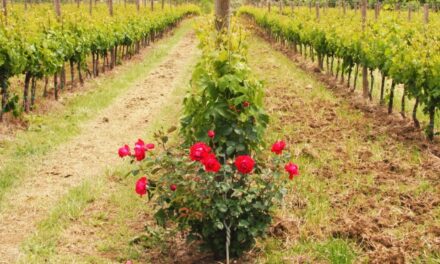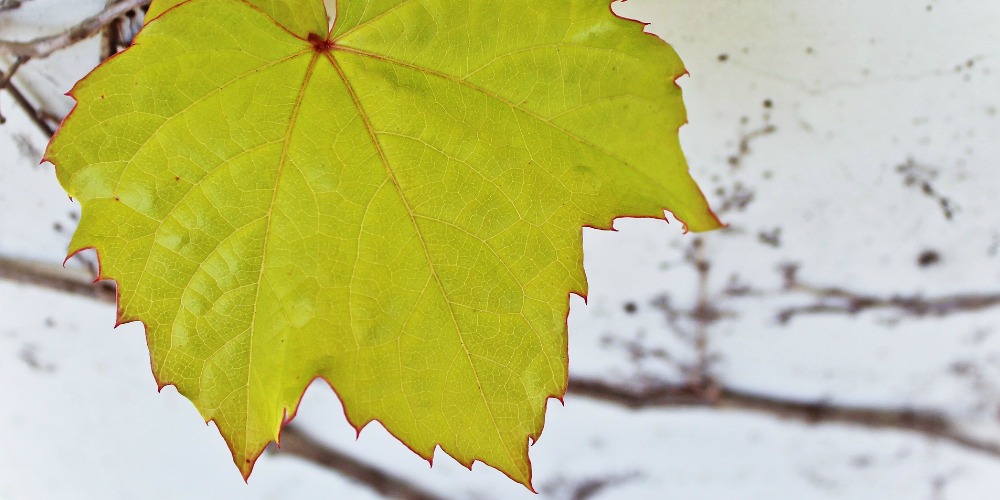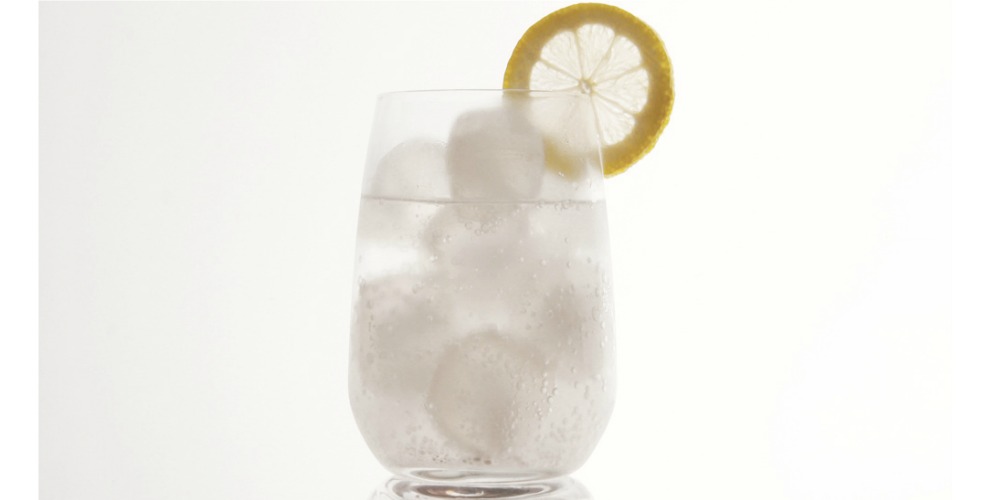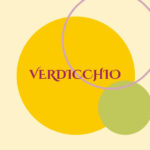Prosecco is the most popular Italian sparkling wine and one of the most popular sparkling wines in the world – easy to drink, good price point! It has captured the hearts of wine enthusiasts worldwide with its effervescence, freshness, and approachability. Whether you’re celebrating a special occasion or simply savouring the joys of life, Prosecco never fails to add a touch of sparkle. In addition to that, it’s International Prosecco Day (held every year on August 13th), so let’s learn more about it and celebrate it! 🥂
Landscape
The Hills of Prosecco in Conegliano and Valdobbiadene showcase a picturesque landscape with rolling hills, charming terraced slopes (small vineyards on narrow grassy terraces called ciglioni or hogback), lush forests, quaint villages, and thriving cultivations. Humans have shaped and adapted this rugged terrain for centuries. Since the 17th century, the clever use of ciglioni has given rise to a unique chessboard-like pattern, with rows of vines aligned both horizontally and vertically along the slopes. In the 19th century, the bellussera vine cultivation method further added to the beauty of the landscape.
The bellussera, developed by the Bellussi brothers in the late 1800s to combat Downy Mildew, involves arranging vine plants in a geometric fashion using rows of tall wooden poles, about 3 to 4 metres in height. These poles are interconnected with iron wires, forming a beautiful radial design. The vines grow along these wires, creating a vineyard that, when seen from above, resembles a massive beehive, a striking natural embroidery that gives the territory an almost abstract appearance. This traditional technique allows for exclusive and skillful handcrafted winemaking.
The patchwork effect of the landscape is the outcome of eco-friendly practices, which have been embraced both in the past and present: small vineyards on terraced slopes harmoniously coexist with pockets of forests, groves, hedges, and rows of trees acting as pathways that connect diverse habitats. The charming villages dot the narrow valleys or perch gracefully on hilltops.
In recognition of its cultural significance, “Le Colline del Prosecco di Conegliano e Valdobbiadene” (= the Hills of Prosecco in Conegliano and Valdobbiadene) were inscribed on the UNESCO World Heritage List in 2019. This prestigious recognition places them alongside other esteemed Italian sites such as: the Costiera Amalfitana, Cinque Terre, Cilento and Vallo di Diano, Sacri Monti, Val d’Orcia, Ville e Giardini Medicei, Langhe-Roero and Monferrato Vineyard Landscapes, among others.
Located between the sea and the Prealps, the Conegliano Valdobbiadene region benefits from a mild climate, with an average yearly temperature of 12.3°C. Steady breezes help the grapes to dry swiftly after rain showers. During the summer, the area experiences regular heavy rainfall, averaging around 1,250 mm. The hills run from east to west, providing a south-facing slope where the vineyards bask in ample sunlight. On the northern slope, typically covered in woodland, the altitude varies between 100 and 500 m. This variance ensures significant fluctuations between daytime and nighttime temperatures, fostering the optimal development of aromas in the grapes.
The soils of Conegliano Valdobbiadene have ancient origins and were formed from the uplifting of sea and lake beds. Some parts of the hills were reshaped by the glaciers of the Dolomites, carrying various sediments downhill. As a result, the soils are deep, composed of rock and sand conglomerates with a significant clay content and sometimes enriched with iron oxides. In areas unaffected by the glaciers, the soils retained their marine origin, consisting of marls and sandstone, less deep and more porous. This diversity results in various soil types and shapes the hills differently: Conegliano hills tend to be gentler, whereas Valdobbiadene’s can be steeper and entirely south-facing.
The Prosecco Galaxy
The entire region of Treviso and the Treviso hills is the realm of Prosecco, with a special focus on the triangle formed by the communes of Valdobbiadene, Conegliano, and Asolo. This is where Prosecco comes in its fancier form known as Prosecco DOCG and may be labelled “Superiore.”
Production Areas
The provinces of Treviso, Belluno, Venezia, Padova, Vicenza (Veneto Region), along with Udine, Pordenone, Trieste, and Gorizia (Friuli-Venezia Giulia Region) together form the Prosecco DOC region. It’s a picturesque area with plenty of hills and steep slopes covered in vineyards dedicated to Prosecco production.
Prosecco‘s popularity has led to many imitations, so strict regulations were introduced to protect the authentic product. An official production area has been created, including the original zone in the province of Trieste and the areas of the Venetian provinces. The process was finalised in 2009, resulting in the recognition of Prosecco DOC (involving all of Friuli and the Venetian provinces), Conegliano-Valdobbiadene Prosecco DOCG, and Asolo Prosecco DOCG.
Therefore, you can now find Prosecco as D.O.C. or D.O.C.G. (Denomination of Controlled and Guaranteed Origin) in the following production areas:
1) Conegliano Valdobbiadene Prosecco DOCG
– Valdobbiadene Superiore di Cartizze DOCG
– Conegliano Valdobbiadene Prosecco Superiore Rive DOCG
– Conegliano Valdobbiadene Prosecco Superiore DOCG
2) Asolo Prosecco DOCG
3) Prosecco DOC Treviso
4) Prosecco DOC Trieste
5) Prosecco DOC
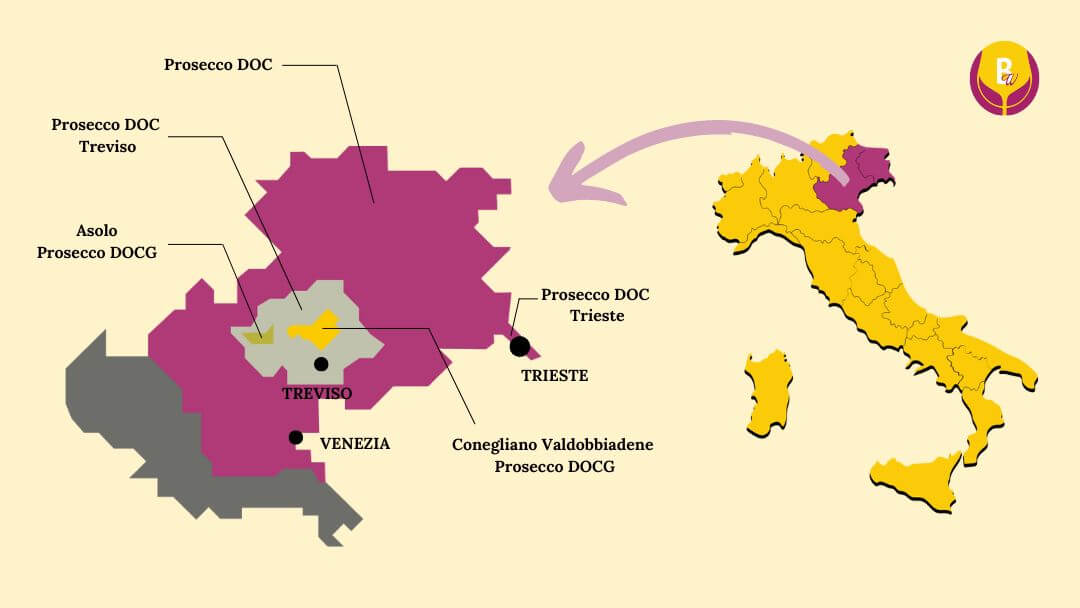
As you can see, Prosecco DOC and Prosecco DOCG are two different things and it depends on the production area.
Grape Varieties
The primary grape used for Prosecco is called Glera (a white grape variety), making up at least 85% of the blend, along with other grape varieties like Bianchetta Trevigiana, Verdiso, Perera, Glera Lunga, Chardonnay, Pinot Bianco, Pinot Grigio, and Pinot Nero.
Glera, the star of sparkling wine production, possesses a remarkable talent for crafting wines with delicate floral and fruity notes, boasting a sleek and light-bodied character with a vibrant acidity. Originating from the picturesque Trieste region of Carso, this grape variety has witnessed a surge in popularity over the past 15 years. From a modest 5,000 hectares of vineyards before 2009, Glera’s cultivation has now expanded impressively to approximately 34,000 hectares.
Prosecco Styles
Nowadays, there are various types of Prosecco to choose from, that suit every taste preference:
1) Prosecco Fermo: (still), also known as “Tranquillo“, is a nice product – and it can’t be labelled “Superiore”. It’s obtained from meticulously cultivated vineyards with lower yields and the grapes are harvested at peak ripeness, resulting in a delicate straw yellow hue. This exquisite Prosecco reveals delightful aromas of apples, pears, almonds, and honey;
2) Prosecco Frizzante (semi-sparkling) – and it can’t be labelled “Superiore”. The second refermentation of the Frizzante takes place in an autoclave, similar to the sparkling version, but with a slightly lower pressure. The maximum pressure allowed is 2.5 bar, whereas for traditional sparkling wine, the minimum is 3 bar. The shorter refermentation period results in a refreshing and vibrant wine, with gentler bubbles, and it exhibits delightful characteristics that make it highly enjoyable and easy to drink;
3) Prosecco Rosé was introduced in 2020 and is made from Glera and Pinot Noir.
4) Prosecco Spumante (sparkling, with the most famous being from the Cartizze area) produced using the Charmat Method (or Martinotti, with refermentation in autoclave) and occasionally with the Champenoise Method. Especially in the Conegliano area, this technique has been extensively studied over time and we can now refer to it as the Conegliano-Valdobbiadene Method. Furthermore, in the Sparkling version of Prosecco, we can identify different types based on the amount of residual sugar, ranging from the very dry “Brut Nature” to the sweetest, “Demi Sec.”, according to the sugar content:
-
-
- Brut Nature: less than 3 g/l;
- Extra Brut: less than 6 g/l;
- Brut: less than 12 g/l;
- Extra Dry: between 12-17 g/l;
- Dry: between 17-32 g/l;
- Sec: between 18-35 g/l;
- Demi-Sec: between 32-50 g/l.
-
In addition to that, you can find the following terms:
-
-
- Millesimato: refers to a wine made with at least 85% of grapes from the same vintage, which must be specified, and no blending with grapes from other years is allowed. This results in a greater focus on grape selection and care, leading to higher production costs.
- Cuvée: indicates a Prosecco made from grapes and vintages from various vineyards.
-
Conegliano Valdobbiadene Prosecco Superiore D.O.C.G.
This sparkling wine is exclusively crafted in the picturesque hills of the Conegliano Valdobbiadene zone, using the revered Glera grape variety cultivated in 15 communes. Here, each winery exhibits their expertise by skillfully blending grapes from various micro-zones, resulting in unique and expressive cuvées that showcase their distinctive winemaking philosophy. With a permitted grape yield of 13.5 tonnes per hectare, the winemakers produce a delightful range of wines, available in enticing versions like Extra Brut, Brut, Extra Dry, and Dry
Sub-Zone “Valdobbiadene Superiore di Cartizze DOCG”
This denomination reigns supreme as a sub-zone with its own distinct regulations since 1969. Nestled in a mere 107 hectares of vineyards, these prestigious lands grace the picturesque hillsides of San Pietro di Barbozza, Santo Stefano, and Saccol in Valdobbiadene. Nature’s artistry comes alive as a gentle microclimate harmonises with ancient soils, composed of moraines, sandstone, and clays, imparting unparalleled character to these exceptional wines.
The maximum yield is meticulously set at 12 tonnes of grapes per hectare, ensuring only the finest produce finds its way into every bottle. The bouquet tantalises the senses, unfolding with complex scents reminiscent of succulent apples, juicy pears, vibrant citrus fruits, and fragrant peaches and apricots. Embracing elegance, a subtle hint of roses dances on the palate, followed by a delightful note of almonds in the lingering aftertaste. Superiore di Cartizze embodies a well-balanced symphony of flavours, gracing the palate with an exquisite dance of fresh, mellow fruit.
Sub-zone “Conegliano Valdobbiadene Prosecco Superiore Rive DOCG”
The term Rive refers to the picturesque slopes of the steep hills that grace this exceptional area. Rive wines originate from the steepest and highest-quality vineyards, carefully sourced from a single commune or a specific area, thus accentuating the distinct characteristics bestowed by each terroir.
There are 43 distinctive Rive, each one showcasing a fascinating combination of soil, sun exposure, and microclimate, resulting in wines of unparalleled character. In the pursuit of excellence, yields are significantly reduced to 13 tonnes of grapes per hectare, with each precious grape lovingly hand-picked. In addition to that, each vintage is proudly displayed on the label.
Prosecco DOC Treviso and Prosecco DOC Trieste
If everything, from harvesting the grapes to wine-making and bottling, happens exclusively within the provinces of Treviso and Trieste, then they can proudly carry the special titles of Prosecco DOC Treviso and Prosecco DOC Trieste.
A Glimpse into the Origins
Prosecco finds its roots in the luscious Veneto and Friuli-Venezia Giulia regions of Italy. The wine is named after the charming village of Prosecco, near Trieste, where the grape variety from which it is made, Glera, has been cultivated for centuries. The first official mentions of Prosecco date back to the 18th century, but its history as a lightly sparkling wine can be traced even further back to Roman times.
In the early 16th century, wines from the Prosecco region caught the attention of literary scholars. Pietro Bonomo, a renowned poet and scholar from Trieste, studied the Natural History of Pliny the Elder and became intrigued by the story of Empress Livia. According to Bonomo, she lived a long and healthy life, thanks to the qualities of the legendary Pucino wine from the Prosecco area. The fame of this wine’s therapeutic properties spread through the writings of the famous doctor Galen, leaving a lasting impact for centuries to come. A testament to Prosecco’s rich history lies in a memorial stone that harks back to the Roman era, with inscriptions mentioning the joyous vendemmiales – festive celebrations held during the grape harvest.
In 1574, as King Henry III of Poland journeyed to Paris for his coronation as King of France, the welcoming community of Conegliano transformed its hills’ white wine into a flowing stream that poured all day from the magnificent Fountain of Neptune. In the literary masterpiece “Il Roccolo, Ditirambo” written in 1754, the renowned author Aureliano Acanti mentions the name “Prosecco,” marking the first recorded instance of this term in history.
The year 1966 marked a significant milestone in Italian winemaking history with the establishment of the Strada del Prosecco (The Prosecco Route), the country’s first officially recognised Wine Road, stretching over a delightful 90 kilometres!
The tale of Prosecco Superiore unfolds in Conegliano Valdobbiadene, a picturesque region in North-East Italy, situated 50 km away from Venice and approximately 100 km from the Dolomites. For more than three centuries, this area has been nurturing the grapes that give birth to Prosecco Superiore. This production area encompasses 15 communes, which is the heart of the Prosecco world; and it stands as one of Italy’s historic denominations, officially recognised in 1969 (Prosecco DOC). Back in 1973, both Asolo and Montello were proudly awarded the DOC designation and later on, in 2009, Conegliano Valdobbiadene was bestowed with the prestigious DOCG (Denominazione di Origine Controllata e Garantita) status, becoming Italy’s 44th DOCG.
Sparkling Winemaking Techniques
Prosecco is known for its gentle bubbles, which are achieved through the Charmat method – a sparkling winemaking process carried out in large steel tanks. Unlike the traditional Champagne method that involves a second fermentation in the bottle, the Charmat method ferments the wine in pressurised tanks, preserving its fresh and fruity characteristics. This approach results in a more affordable and approachable sparkling wine.
Taste Profile
Expect a delightful symphony of flavours when sipping Prosecco. Notes of crisp green apples, ripe pears, and white peaches dance on the palate, complemented by hints of citrus and floral undertones. Its refreshing acidity and light body make Prosecco an ideal aperitif, perfect for toasting and celebration.
Food Pairings
Prosecco‘s versatility extends to food pairings, making it a crowd-pleaser on the dining table. Prosecco has achieved global fame as an essential part of aperitivo/aperitif/happy-hour, a cherished ritual that has transcended borders, symbolising the essence of the Italian lifestyle. This cherished moment has captured hearts worldwide, becoming an iconic experience that resonates at an international level.
However, Prosecco‘s allure extends beyond a mere pre-dinner tradition. With its delightful range of sweetness levels, this sparkling gem is a versatile companion throughout a meal. Especially in its captivating Brut version, Prosecco proves to be the perfect accompaniment to elevate any dining experience.
It pairs wonderfully with seafood, light salads, soft cheeses, and antipasti. For a real treat, enjoy Prosecco with Italian delicacies like bruschetta, Risotto with Radicchio Rosso di Treviso, Frico or Sbrisolona cake.
Serving and Glassware
To fully appreciate Prosecco‘s effervescence and aromas, serve it at a chilled temperature between 6°C and 8°C, in a tulip-shaped glass. I’ll close one eye if you pour Prosecco in a flûte, but that’s not the ideal container in this case! The elongated shape of the flûte helps maintain the bubbles, while the tulip design allows you to better appreciate the delightful complex nuances and the rich bouquet of Prosecco DOCG.
Please avoid adding ice cubes, ok? I know it’s been really hot, but please refrain from it. Just chill the bottle properly and you’re good to go!
Storage
Savour the delightful qualities of Prosecco at its best within a year of harvest. As time passes, its initial fruity and floral aromas evolve into more mature, vinous nuances, offering a delightful journey of sensory pleasure. To preserve its enchanting flavours, store your Prosecco bottles in a cool, dry place, away from the grasp of light and heat. Conegliano Valdobbiadene DOCG can be stored longer, though.
What is Prosecco? Don’t be fooled! Say NO to Fake Prosecco
Please mind you that if a wine is named “Prosecco”, but it’s produced in a different territory (check “The Prosecco Galaxy” section above), then it’s not a real Prosecco! Moreover, Prosecco is only sold in glass bottles. There’s no such thing as Prosecco on tap or in a can.
Latest Sales Trends
Interestingly, Prosecco has become the most exported Italian wine, even surpassing Champagne in terms of volume.
-
- in 2022, Prosecco exports reached 638.5 million bottles, with a value of 3 billion Euros;
- Prosecco exports have grown by an average of 10% per year over the past five years;
- the United States is the largest export market for Prosecco, with 134 million bottles imported in 2022. The United States is the fastest-growing export market for Prosecco, with exports to the US growing by 20% in 2022;
- the United Kingdom is the second-largest export market for Prosecco, with 125 million bottles imported in 2022.
- other major export markets for Prosecco include Germany, France, and Belgium;
- Prosecco is now the best-selling sparkling wine by volume in the United States;
- The latest report from the Observatory of the Italian Union of Wines (Osservatorio dell’Unione Italiana Vini – UIV) reveals that in the first four months of 2023, Prosecco sales worldwide experienced a slight dip of 5.9%, settling at the 100 million liters mark, while the entire sparkling wine sector showed a -3% decline. However, Asti has proven to be an exception with an impressive growth of +18.7%. The Prosecco sales decline in some countries, like the United States, might be attributed to overstocking from the previous year, and it is expected that the data will stabilise as the year goes on.
Prosecco has become a global sensation, spreading happiness and cheer with every sip. Its effervescence and refreshing taste are the embodiment of life’s simplest pleasures. So, the next time you reach for a glass of Prosecco, remember the vineyards of northeastern Italy and the centuries of tradition that have gone into crafting this delightful bubbly. May your Prosecco journey be filled with laughter, love, and the joy of living life to the fullest.
Salute! 🍾🥂





